- News
- Reviews
- Bikes
- Accessories
- Accessories - misc
- Computer mounts
- Bags
- Bar ends
- Bike bags & cases
- Bottle cages
- Bottles
- Cameras
- Car racks
- Child seats
- Computers
- Glasses
- GPS units
- Helmets
- Lights - front
- Lights - rear
- Lights - sets
- Locks
- Mirrors
- Mudguards
- Racks
- Pumps & CO2 inflators
- Puncture kits
- Reflectives
- Smart watches
- Stands and racks
- Trailers
- Clothing
- Components
- Bar tape & grips
- Bottom brackets
- Brake & gear cables
- Brake & STI levers
- Brake pads & spares
- Brakes
- Cassettes & freewheels
- Chains
- Chainsets & chainrings
- Derailleurs - front
- Derailleurs - rear
- Forks
- Gear levers & shifters
- Groupsets
- Handlebars & extensions
- Headsets
- Hubs
- Inner tubes
- Pedals
- Quick releases & skewers
- Saddles
- Seatposts
- Stems
- Wheels
- Tyres
- Health, fitness and nutrition
- Tools and workshop
- Miscellaneous
- Tubeless valves
- Buyers Guides
- Features
- Forum
- Recommends
- Podcast
review
£49.99
VERDICT:
Impressive grip but frustratingly slow and difficult to fit; commuter-friendly, but not viable for most road cyclists
Weight:
400g
Contact:
At road.cc every product is thoroughly tested for as long as it takes to get a proper insight into how well it works. Our reviewers are experienced cyclists that we trust to be objective. While we strive to ensure that opinions expressed are backed up by facts, reviews are by their nature an informed opinion, not a definitive verdict. We don't intentionally try to break anything (except locks) but we do try to look for weak points in any design. The overall score is not just an average of the other scores: it reflects both a product's function and value – with value determined by how a product compares with items of similar spec, quality, and price.
What the road.cc scores meanGood scores are more common than bad, because fortunately good products are more common than bad.
- Exceptional
- Excellent
- Very Good
- Good
- Quite good
- Average
- Not so good
- Poor
- Bad
- Appalling
The Aither 1.1s are the latest in puncture-proof technology from Tannus, which claims that the 1.1s set a new benchmark in solid tyre performance. In my experience though, they still have a long way to go before they can even come close to the comfort and speed of a clincher, tubular or tubeless tyre.
If you thought solid tyres were the preserve of kids tricycles and wheelchairs, think again – Tannus presented its first solid bike tyre in 2004, and claims they are a real alternative for those who don't want to worry about flats.
> Find your nearest dealer here
They're made use a special polymer resin that Tannus calls 'Aither', a foaming technology similar to the foam used in sports shoes (Tannus began life developing EVA foam for Nike in the early 90s) but conditioned and processed differently to make it bike-specific.
Tannus isn't alone either: as far as competition is concerned there is the UK's own Greentyre, and we recently reported on an airless concept developed by Bridgestone, but Tannus is the most prominent brand currently producing airless bike tyres.
Tannus says the Aither 1.1s have 15% less rolling resistance than the Aither 1.0. They also weigh 30g less at 400g, which is comparable to a basic clincher tyre and tube combination. What about a race tyre? A 25mm Continental GP4000s II plus a standard Continental 700C butyl inner tube has a combined weight of 325g, but add in gear for puncture protection such as a pump, spare tubes and levers, and Tannus actually nets you a small weight win overall, so fairly impressive.
While the main USP of solid tyres is the lack of maintenance needed and a commuter-friendly appeal, the Aither 1.1 appears to be targeted at road cyclists too, given the rolling resistance data supplied and Tannus's foray into team sponsorship. It's now supplying Aither 1.1s to the Ukrainian national cycling team for their winter training bikes, and also a number of pro triathletes.
Can they really come close to the performance of an air-filled tyre? I was intrigued to try the 25mm versions out.
Fit first
Anyone with any experience of solid tyres will know that it's not a simple job to get them fitted. The Tannus solution is to supply the tyres with small plastic tacks, which are bridged across the rim of the wheels all the way around to keep the tyres in place when they're loaded on.
To see the process performed up close by someone in the know, I went to have my tyres fitted by vastly experienced mechanic Gary Harris of Bristol Bike Centre, a Tannus stockist. With the help of an assistant, fitting took him over 45 minutes, probably putting Tannus out of the question for the regular home mechanic.
Tannus itself told me the fitting process could take a simple soul like myself up to two hours to fit. Now, for Tannus's target market of those who are either unwilling or unable to fix a puncture, and having seen the fitting process, it's likely that in 99 per cent of cases Tannus customers will roll up at a bike shop complaining about punctures, be recommended solids and have them fitted by a mechanic. At £49.99 a tyre and assuming at least a £10 labour charge, that pushes Tannus over the £100 mark. But considering they're built to last for thousands of miles, that's reasonable value in the long run.
On the road
On my initial flat ride home I was pleasantly surprised. It took until I hit a bit of rough road to even feel anything different at all, but as soon as I did, and when I hit a hill, that's where they started to show their weaknesses. When riding up an incline I could actually hear them sticking to the road, and it completely takes the wind out of your sails. It sounded like they were folding underneath me, and I could really feel my weight through the front end of the bike.
Then, there's the comfort issue. Obviously there's less cushioning between you and the road on solid tyres, and boy did I feel it. My cycle path route to work has a cattle grid on it; it was a tooth-rattling ride over that on these tyres.
The huge vibrations I felt led me to wonder whether I was actually damaging my rims, but after checking my spokes after most rides, and getting a second opinion from a mechanic, it appears they have caused my wheels no damage at all.
On a positive note, the grip is decent, and I didn't have any problems riding them in the wet at all. In terms of performance compared with a clincher, tub or tubeless tyre, I'd say grip is where the Aither 1.1s come closest to matching up and even surpassing some.
Compare and contrast
Though Tannus claims rolling resistance has been reduced on the Aither 1.1, I had a strong feeling they weren't anywhere close to the speed of a clincher, but wanted some evidence to demonstrate this. To do this, I rode the traffic-free section of my route to work with Favero's Assioma dual-sided power meter pedals, aiming for the same power, on successive days, with the Tannus tyres the first day and a control clincher tyre on the second, the Continental GP4000s II.
On both runs, I used a Canyon Endurace AL Disc 7.0 and the same clothing.
On the Aither 1.1s I completed the 14.7-mile route in 46:43 at 18.9mph, with a weighted average power of 237 watts.
On the next morning, with a slight wind penalty compared to the previous day, I rode the same 14.7 miles in 43:37 at 20.3mph, putting in an extra watt for an average weighted power of 238 watts.
Though this test wasn't completely accurate by any means, it demonstrates what you can expect from them compared to a clincher: a speed loss of nearly 1.5mph, and this on a flat route; from my experience, it would be worse on a ride with a lot of climbing.
> 15 of the best winter tyres for road bikes
My speed comparison test is probably of little relevance to the people who need these tyres: commuters who are city based (in a mostly flat city) and weekenders who have no interest in performing any type of bike maintenance, even pumping their tyres up, whenever they go for a leisurely spin.
What this test and my other 200 miles-plus of riding on them do show, though, is that they aren't for anyone who has any interest in average speed, or anyone who can fix a puncture on a standard clincher in 10 minutes or less. I can generally fix a flat in four minutes or less if I have a CO2 canister handy, so I could theoretically puncture every single day and still get to work and back quicker on a clincher – which means, practically, I couldn't justify running the Tannus tyres on my bike.
One thing the tyres do provide is a very tough workout, so it could be said that there is a small market for those who want to use them exclusively over winter and feel some extreme psychological benefits when they switch back to race tyres – presumably the motives behind the Ukrainian national team and the pro triathletes who use them.
In summary, despite the improvements to the latest Tannus road tyres, I don't think the Aither 1.1s are about to replace air-filled tyres on road bikes any time soon. For now at least, if you want a faster road tyre with increased puncture protection, check out our guide to going tubeless.
Verdict
Impressive grip but frustratingly slow and difficult to fit; commuter-friendly, but not viable for most road cyclists
road.cc test report
Make and model: Tannus Aither 1.1 solid tyres
Size tested: 700 x 25
Tell us what the product is for, and who it's aimed at. What do the manufacturers say about it? How does that compare to your own feelings about it?
It's "the most modern solid tyre in the world."
Tannus says: "The perfect hardness 105psi equivalent, incredible grip and extremely low rolling resistance. Aither1.1 had much enhanced elasticity than Aither 1.0 (Tannus' previous road tyre), ensuring a better feel whilst riding and good grip performance.Furthermore, Aither 1.1 is performing at a much lower rolling resistance - approximately 15% less. It now has the rolling resistance rate that closely matches premium pneumatic city bike tires, taking this a step closer to ideal bike tire."
Tell us some more about the technical aspects of the product?
Tannus lists the following:
Made from 'Aither', a micro closed cell polymer resin developed by Tannus
105Psi equivalent
Available in 12 colours
Weight: 400g
Rate the product for quality of construction:
5/10
Built to last but not to go fast, contrary to promises of performance improvements.
Rate the product for performance:
4/10
Good on the flats and at a leisurely pace, but you can feel every vibration through them, and the slightest hint of a hill felt like riding through treacle.
Rate the product for durability:
10/10
Tannus claims 1.5mm of wear after riding 9000km. You can't argue with that.
Rate the product for weight (if applicable)
6/10
Heavier than a standard clincher and tube combination, but arguably lighter than carrying spare tubes and tools.
Rate the product for comfort (if applicable)
2/10
A long way to go until they match the comfort of a clincher, tubular or tubeless race tyre.
Rate the product for value:
8/10
A bigger outlay, but in the long run cheaper than running most regular road tyres.
Tell us how the product performed overall when used for its designed purpose
Obviously they're puncture proof, and the grip is reasonable, but they're frustratingly slow and harsh.
Tell us what you particularly liked about the product
Not having to worry about punctures, of course!
Tell us what you particularly disliked about the product
The harsh feeling and the lack of momentum when you hit a gradient.
Did you enjoy using the product? Sometimes...
Would you consider buying the product? Personally, no.
Would you recommend the product to a friend? If they were commuting in a flat city and were averse to performing any sort of bike maintenance, then yes.
Use this box to explain your score
It's a difficult product to score definitively, because it's horses for courses... As solid tyres go they're an improvement, but the Tannus Aither 1.1s in their current guise aren't the answer in the battle against punctures for road cyclists.
About the tester
Age: 27
I usually ride: Road bike (currently Specialized Tarmac) My best bike is: Ridley Chronus TT bike
I've been riding for: Under 5 years I ride: Every day I would class myself as: Experienced
I regularly do the following types of riding: road racing, time trialling, commuting, club rides, sportives, general fitness riding, triathlon races
Jack has been writing about cycling and multisport for over a decade, arriving at road.cc via 220 Triathlon Magazine in 2017. He worked across all areas of the website including tech, news and video, and also contributed to eBikeTips before being named Editor of road.cc in 2021 (much to his surprise). Jack has been hooked on cycling since his student days, and currently has a Trek 1.2 for winter riding, a beloved Bickerton folding bike for getting around town and an extra beloved custom Ridley Helium SLX for fantasising about going fast in his stable. Jack has never won a bike race, but does have a master's degree in print journalism and two Guinness World Records for pogo sticking (it's a long story).
Latest Comments
- Andrewbanshee 15 min 10 sec ago
It is possible that he didn't know that many of the trees need to be cut down.
- eburtthebike 25 min 4 sec ago
You should learn to share the road: like the drivers do.
- Steve K 30 min 17 sec ago
I don't think Lime are anywhere near folding.
- Andrewbanshee 33 min 28 sec ago
As you said the pedals will be hidden anyway. My shoes, 3 pairs of them, have reflective strips on the heel and my winter trousers do too on the...
- Steve K 34 min 30 sec ago
Other drivers only care about disabled people when it gives them a way to object to cycling infrastructure.
- mark1a 8 hours 37 min ago
I'll put you down as a no then.
- chrisonabike 14 hours 4 min ago
Well if you *can* interview the original riders at all surely they worked, at least?...
- David9694 14 hours 33 min ago
Live: Car plunges over wall and lands on beach rocks...
- brooksby 19 hours 46 min ago
And finally: I wonder how many of the "more than 3,000" signatures on that petition are actually locals, who live or work there (and are not just...





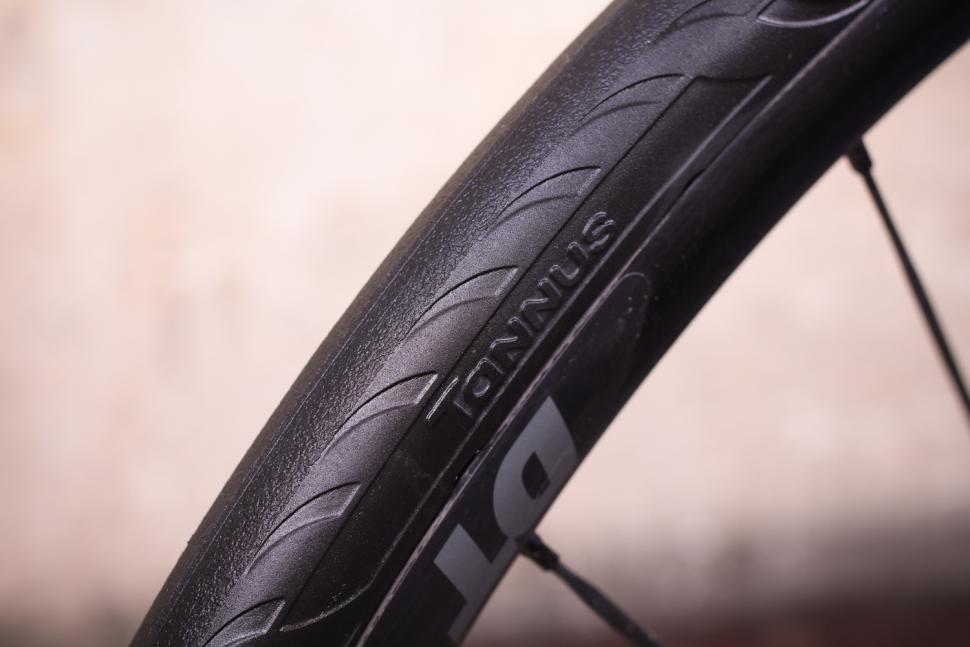
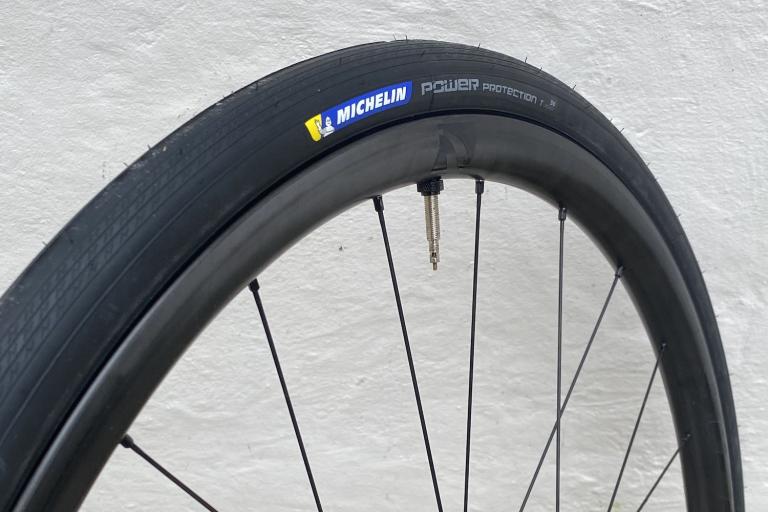
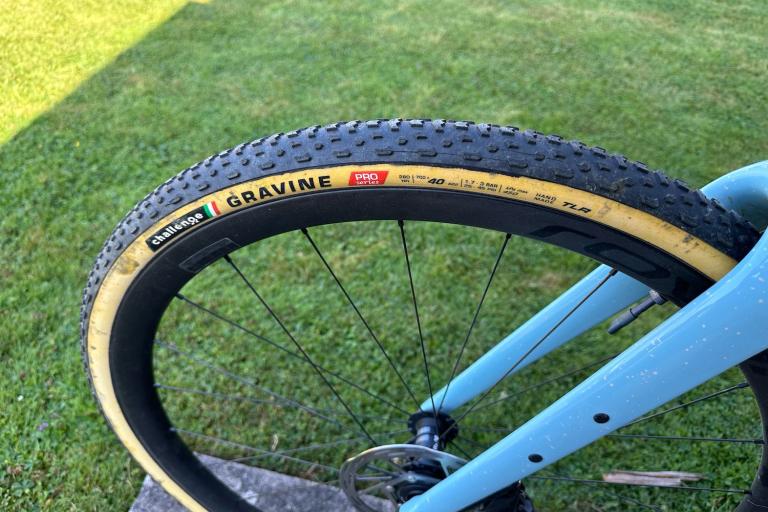
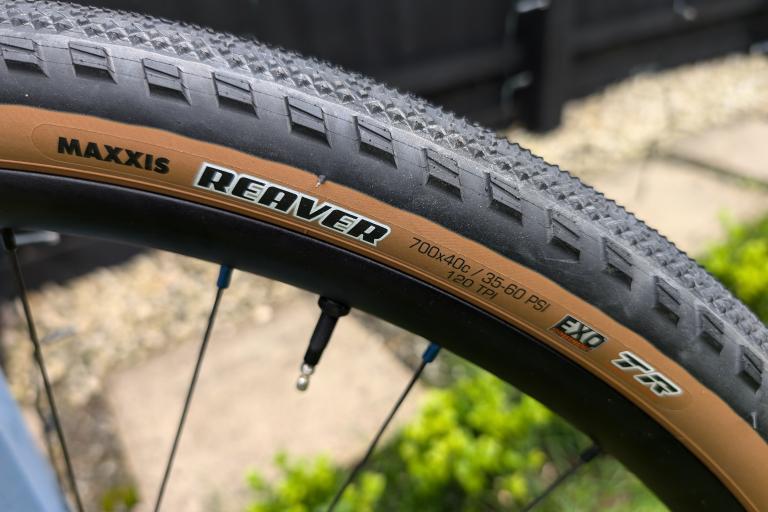
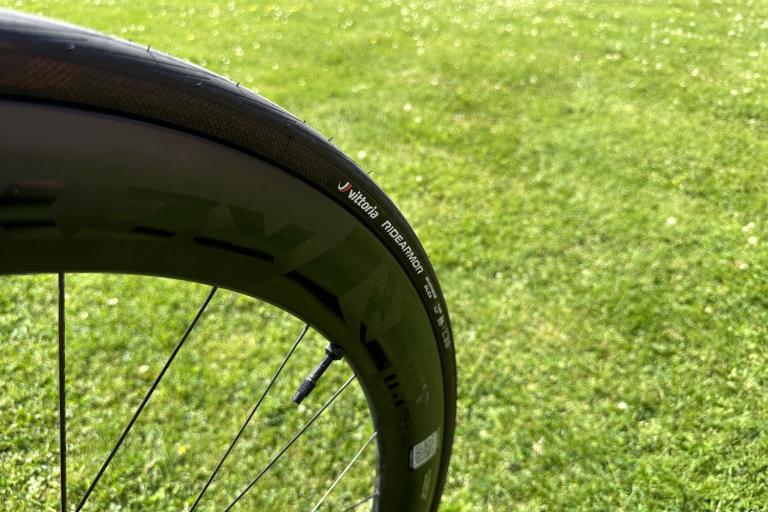
Add new comment
34 comments
My experience was different. Speed difference was great. Think 20 minutes over 30 miles...
Hi, I've just corrected this - I originally wrote 'four minutes', editing error! I have said as such - for me it's not worth it because I can change a puncture quicker than the time I'm losing. For a lot of commuters they would be worth it though - but most aren't using road bikes, and this is a road bike tyre.
I'm intrigued by the plastic tacks mentioned - photos?
Otherwise, I'm out - I can't see any advantage to them for me over normal clinchers.
I don't have them with me but here is a link to the Tannus fitting guide - https://www.tannus.co.uk/assets/UserManual/TANNUS-UserManual-0417.pdf
So you put them into little holes in the tyres, use the supplied lever tool to get them fully inserted and then click them into the rim. From watching a mechanic do it and having a go myself I know it's quite heavy work, he said himself they're not really sold as DIY for 99% of their customers.
Pages